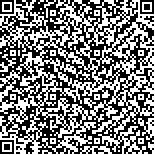| 李 灿,王 静,廖先珍.2013—2017年湖南省肿瘤登记地区肺癌发病与死亡变化趋势分析[J].中国肿瘤,2021,30(11):841-847. |
| 2013—2017年湖南省肿瘤登记地区肺癌发病与死亡变化趋势分析 |
| Trend of Incidence and Mortality of Lung Cancer in Hunan Cancer Registration Areas from 2013 to 2017 |
| 中文关键词 修订日期:2021-04-25 |
| DOI:10.11735/j.issn.1004-0242.2021.11.A007 |
|
 |
| 中文关键词: 肺癌 发病率 死亡率 年度变化百分比 湖南 |
| 英文关键词:lung cancer incidence mortality annual percent change Hunan |
| 基金项目: |
|
| 摘要点击次数: 1716 |
| 全文下载次数: 323 |
| 中文摘要: |
| 摘 要:[目的] 分析2013—2017年湖南省肿瘤登记地区肺癌发病和死亡的流行变化趋势。[方法] 整理湖南省30个肿瘤登记点报告的肿瘤登记数据,统计分析肺癌的发病率、中国人口标化发病(死亡)率、年龄别发病(死亡)率、0~74岁累积发病(死亡)率、35~64岁截缩发病(死亡)率和年度变化百分比(annual percent change,APC)等指标。[结果] 2013—2017年湖南省肿瘤登记地区肺癌发病率为55.60/10万,其中男性发病率为79.84/10万,女性发病率为29.86/10万;同期肺癌死亡率为46.50/10万,男性死亡率为68.06/10万,女性死亡率为23.60/10万,男性肺癌发病率和死亡率均明显高于女性。2013—2017年肺癌中标发病率较为稳定,但农村地区肺癌中标发病率由2013年的31.26/10万上升至2017年的33.21/10万,APC为1.6%(t=6.34,P=0.008)。肺癌中标发病率表现为男性高于女性,城市高于农村地区。湖南省肺癌中标死亡率呈上升趋势,由2013年的26.27/10万上升至2017年的30.26/10万,APC为3.2%(t=3.94,P=0.029)。农村地区肺癌中标死亡率由2013年的23.66/10万上升至2017年的28.07/10万,APC为4.7% (t=7.07,P=0.006)。男性肺癌中标死亡率由2013年的39.59/10万上升至2017年的46.06/10万,APC为3.6%(t=6.57,P=0.007)。肺癌中标死亡率表现为男性高于女性,城市高于农村地区。肺癌年龄别发病率和死亡率在0~39岁处于较低水平,40岁以后随着年龄增长而上升,75~79岁年龄组达高峰。40~44岁年龄组后,男性各年龄别发病率和死亡率均明显高于女性。湖南省肿瘤登记地区2013—2017年肺癌0~74岁累积发病率和35~64岁截缩发病率总体较为稳定,肺癌0~74岁累积死亡率从2013年的3.28%上升至2017年的3.83%,APC为3.6% (t=5.60,P=0.011),上升趋势有统计学意义。[结论] 湖南省肿瘤登记地区肺癌发病和死亡均居恶性肿瘤首位,死亡率呈上升趋势,应高度重视肺癌的筛查与早诊早治工作。 |
| 英文摘要: |
| Abstract:[Purpose] To analyzed the trend of lung cancer incidence and mortality in Hunan cancer registration areas from 2013 to 2017. [Methods] Based on the data reported by 30 cancer re-gistries in Hunan Province, indicators including the incidence/mortality of lung cancer, age-standardized incidence/mortality by Chinese standard population(ASIRC/ASMRC), age-specific incidence/mortality, cumulative incidence/mortality rate(0~74 years), truncated incidence/mortality rate(35~64 years) and annual percent change(APC) were calculated. [Results] The incidence of lung cancer in Hunan cancer registration areas from 2013 to 2017 was 55.60/105, and that was 79.84/105 for the males and 29.86/105 for the females. The lung cancer mortality during the same period was 46.50/105, and that was 68.06/105 for the males and 23.60/105 for the females. The incidence and mortality of lung cancer in males were significantly higher than those in females. The overall age-standardized incidence of lung cancer in the Hunan cancer registration areas from 2013 to 2017 was relatively stable. The ASIRC in the rural areas increased from 31.26/105 in 2013 to 33.21/105 in 2017, and the APC was 1.6%(t=6.34, P=0.008). The ASIRC was higher in males than that in females, and it was higher in urban areas than that in rural areas. The ASMRC in Hunan cancer registration areas increased from 26.27/105 in 2013 to 30.26/105 in 2017, and the APC was 3.2%(t=3.94, P=0.029). The ASMRC in the rural areas increased from 23.66/105 in 2013 to 28.07/105 in 2017, and the APC was 4.7%(t=7.07, P=0.006). The ASMRC in males increased from 39.59/105 in 2013 to 46.06/105 in 2017 with the APC of 3.6%(t=6.57, P=0.007). The ASMRC was higher in males than that in females, and it was higher in urban areas than that in rural areas. The age-specific incidence and mortality of lung cancer were at a low level between 0~39 years old, and gradually increased after 40 years old, reaching the peak at the age of 75~79 years old. Starting from age of 40 years old, the age-specific incidence and mortality rates in males were significantly higher than those in females. The cumulative incidence(0~74 years) and truncated incidence of lung cancer(35~64 years) remained stable from 2013 to 2017. The cumulative mortality(0~74 years) of lung cancer increased from 3.28% in 2013 to 3.83% in 2017, and the APC was 3.6%(t=5.60, P=0.011) showing a significantly increasing trend. [Conclusion] The incidence and mortality of lung cancer in Hunan rank first among all cancers, and the mortality is increasing year by year. The screening, early diagnosis and treatment of lung cancer should be strengthened. |
|
在线阅读
查看全文 查看/发表评论 下载PDF阅读器 |